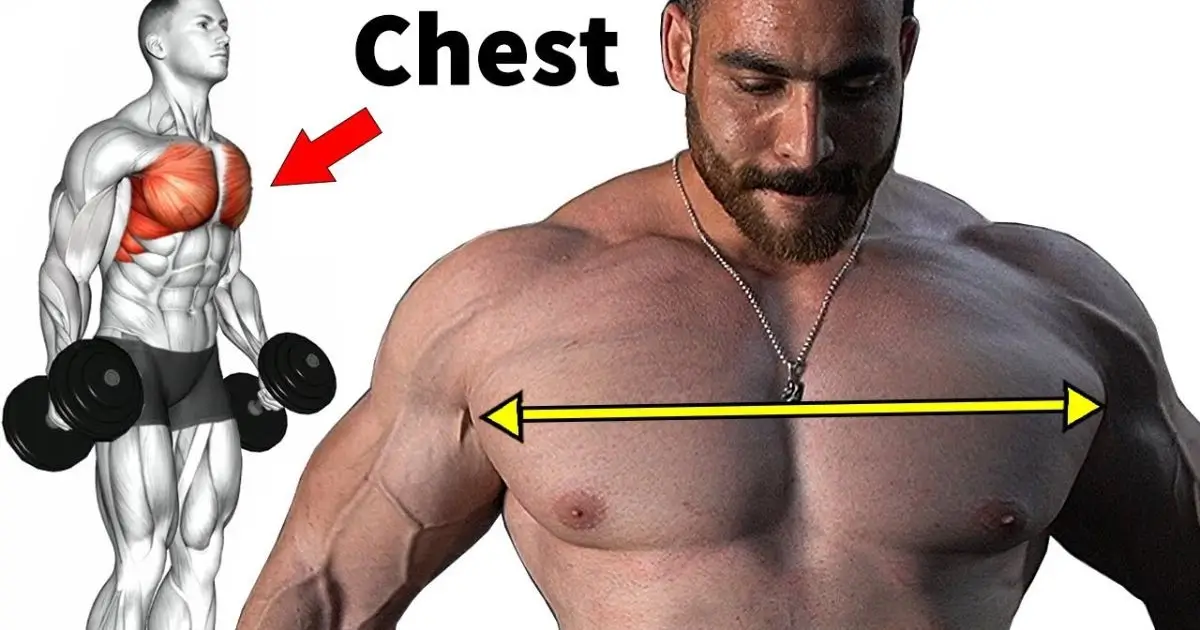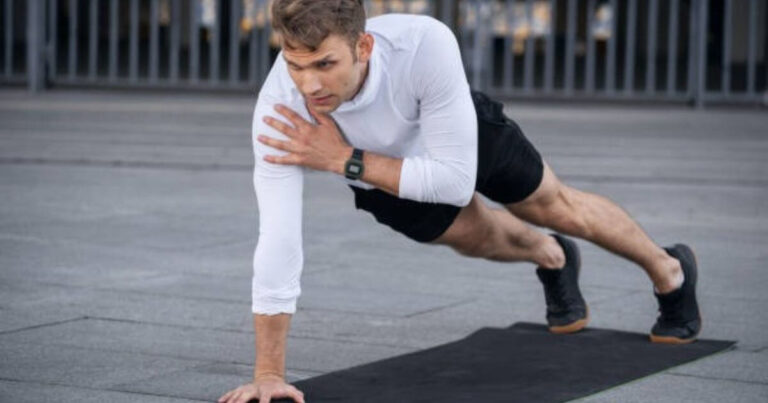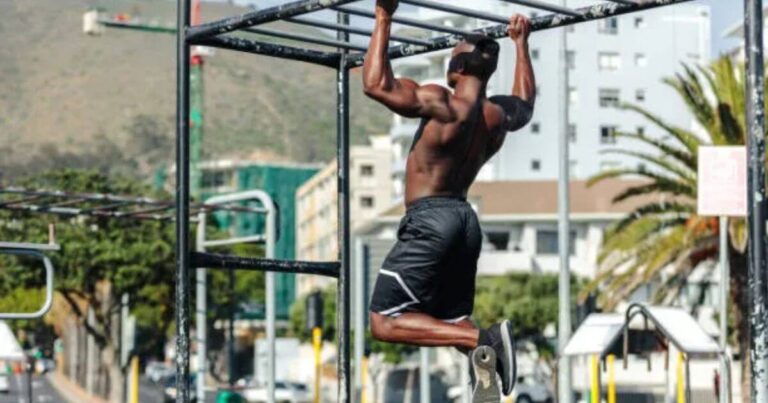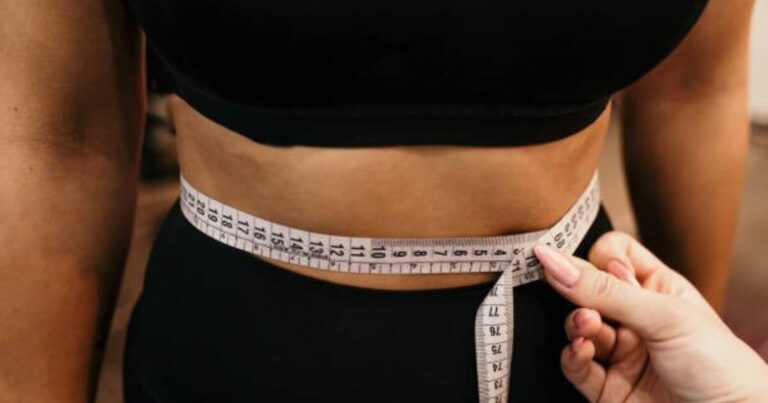Chest Workout in the Gym (Push Day Focus)
Main Goal: Build chest mass, upper chest thickness, and definition.
Table of Contents
1. Barbell Bench Press
- 4 sets × 6–10 reps
- Focus on progressive overload (add weight weekly if possible)
- Rest: 90 sec

The Barbell Bench Press is often called the king of chest exercises — and for good reason. This compound movement is a fundamental part of most chest workouts and is essential for building upper body strength, muscle mass, and power. Whether you’re a beginner or an advanced lifter, mastering the barbell bench press can dramatically improve your chest development and overall physique.
What is the Barbell Bench Press?
The barbell bench press is a strength training exercise where you lie on a flat bench and press a weighted barbell upwards from your chest until your arms are fully extended. This exercise primarily targets the pectoralis major (the chest muscles), but it also engages the anterior deltoids (front shoulders), triceps, and stabilizing muscles throughout the upper body.
Why is it so effective?
One reason the bench press is so effective is that it allows you to lift heavy weights safely and with control. Using a barbell instead of dumbbells helps maintain balance and lets you focus on pushing maximum weight, which is critical for building muscle size and strength. The movement pattern also mimics many real-world pushing motions, which makes it functional and practical.
How to Perform the Barbell Bench Press Properly
- Setup: Lie flat on the bench with your eyes under the bar. Your feet should be firmly planted on the ground, and your back should maintain a natural arch. Grip the bar slightly wider than shoulder-width.
- Unrack the Bar: Take a deep breath, brace your core, and lift the bar off the rack carefully.
- Lower the Bar: Slowly lower the bar to your mid-chest while keeping your elbows at about a 45-degree angle from your body. Control the descent — don’t drop the bar too fast.
- Press Up: Drive the bar back up by pushing through your chest and triceps until your arms are fully extended. Exhale as you press.
- Repeat: Complete your set with controlled and smooth reps.
Tips for Best Results
- Progressive Overload: To build muscle, aim to gradually increase the weight you lift over time.
- Rest Periods: Take about 90 seconds rest between sets to allow your muscles to recover.
- Proper Form: Avoid flaring your elbows out too much or bouncing the bar off your chest, as this can lead to injury
2. Incline Dumbbell Press
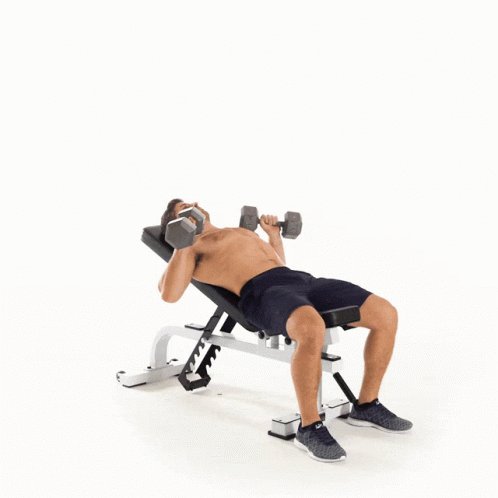
- 4 sets × 8–12 reps
- Squeeze at the top for 1 sec
- Rest: 60–75 sec
chest, helping to create a fuller, more defined chest shape. Unlike the flat bench press, the incline angle shifts more focus onto the upper pectoral muscles and the front shoulders, making it an essential movement for balanced chest development.
Why Choose Incline Dumbbell Press?
Using dumbbells instead of a barbell allows for a greater range of motion and activates stabilizing muscles more effectively. Dumbbells also help correct strength imbalances between your left and right sides since each arm works independently. This can lead to better muscle symmetry and improved muscle control.
How to Perform the Incline Dumbbell Press Correctly
- Set the Bench: Adjust your bench to an incline angle of about 30 to 45 degrees. Avoid too steep an angle, which puts too much strain on your shoulders.
- Starting Position: Sit back on the bench holding a dumbbell in each hand. Plant your feet firmly on the ground for stability.
- Press Movement: Press the dumbbells upward and slightly together until your arms are nearly fully extended. At the top of the movement, pause and squeeze your chest muscles for about one second.
- Lower the Weights: Slowly lower the dumbbells back down to chest level, controlling the movement to maximize muscle engagement.
- Repeat: Complete your set with steady, controlled reps.
Benefits of Incline Dumbbell Press
- Targets the upper chest and front shoulders more than flat presses
- Improves muscle balance and coordination
- Increases chest thickness and definition
- Reduces the risk of shoulder injuries due to the natural dumbbell movement path
3. Chest Press Machine (Seated)
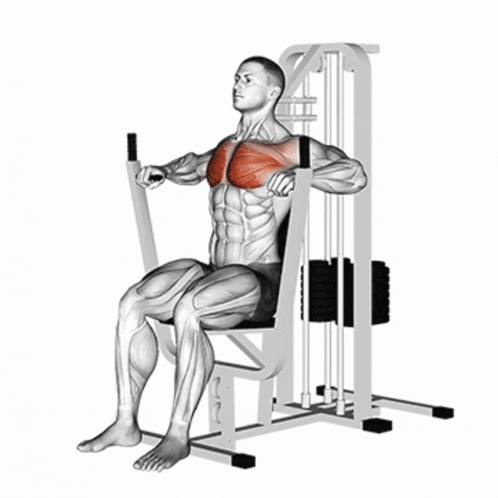
- 3 sets × 10–12 reps
- Control the negative (lower slowly)
- Rest: 45–60 sec
The Chest Press Machine (Seated) is a great exercise for anyone looking to build chest strength and muscle safely and efficiently. It’s especially useful for beginners, those recovering from injury, or anyone who wants to focus on controlled movement without worrying about balancing free weights.
What Makes the Chest Press Machine Different?
Unlike free weights, the chest press machine guides your movement along a fixed path. This provides more stability and reduces the risk of injury caused by improper form. It’s perfect for isolating the chest muscles and focusing on muscle growth.
How to Perform the Chest Press Machine Correctly
- Adjust the Seat: Make sure the seat height positions the handles at chest level. Your feet should be flat on the floor.
- Grip the Handles: Grab the handles firmly with a comfortable grip.
- Press Forward: Push the handles straight forward until your arms are almost fully extended, but don’t lock your elbows.
- Control the Negative: Slowly bring the handles back towards you, controlling the movement to engage your chest muscles effectively.
- Repeat: Perform 3 sets of 10–12 reps, focusing on slow and controlled reps.
Benefits of Using the Chest Press Machine
- Provides stability, making it safer for beginners or those with weaker stabilizer muscles
- Helps maintain consistent form, reducing the risk of injury
- Focuses the work on the chest muscles by limiting momentum and cheating
- Easy to adjust weight and track progress
4. Cable Chest Flys (Middle or High to Low)
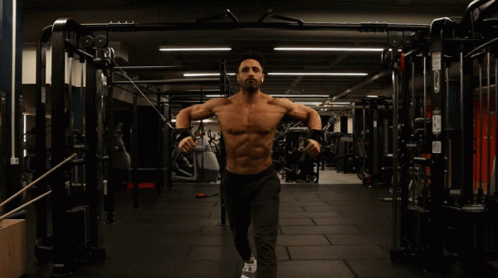
- 3 sets × 12–15 reps
- Focus on the stretch and chest squeeze
- Rest: 45 sec
The Cable Chest Flys is a fantastic isolation exercise that targets the chest muscles with continuous tension throughout the movement. Unlike pressing exercises, flys focus on stretching and squeezing the pectoral muscles, which is key for muscle definition and shaping.
Why Choose Cable Chest Flys?
Using cables instead of dumbbells or machines offers constant resistance through the entire range of motion. This helps activate the chest muscles more effectively, especially in the stretch and contraction phases. You can perform this exercise from different angles — middle to middle, or high to low — to target various parts of the chest.
How to Perform Cable Chest Flys (High to Low or Middle)
- Setup: Attach handles to the cable pulleys at the desired height — either mid-chest level or higher for a high-to-low movement. Stand in the middle of the machine with one foot forward for balance.
- Starting Position: Hold a handle in each hand with your arms extended out to the sides, slightly bent at the elbows.
- Movement: Bring your hands together in front of your chest in a wide arc, squeezing your chest muscles hard at the peak of the movement.
- Stretch: Slowly return your arms back to the starting position, feeling the stretch across your chest.
- Repeat: Perform 3 sets of 12–15 reps with controlled, smooth motions.
Benefits of Cable Chest Flys
- Provides continuous tension on the chest muscles
- Enhances muscle definition and shape
- Allows targeting of different chest areas by adjusting pulley height
- Improves mind-muscle connection due to focused movement
5. Pec Deck Machine (Chest Fly Machine)
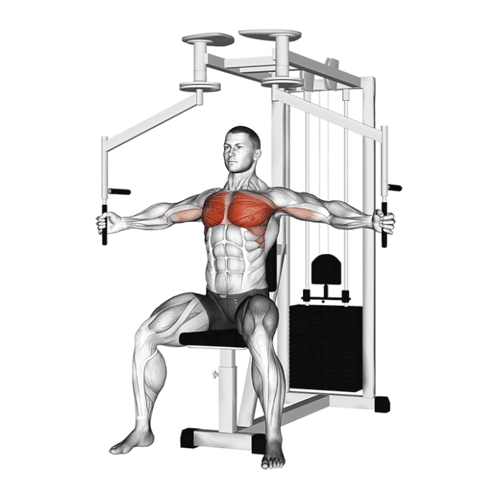
- 3 sets × 12–15 reps
- Use light to moderate weight, squeeze hard at full contraction
- Rest: 45 sec
The Pec Deck Machine, commonly known as the chest fly machine, is a fantastic tool for isolating your chest muscles and improving muscle definition. This exercise is especially effective at targeting the pectoral muscles without involving too much assistance from the shoulders or triceps, making it perfect for focused chest work.
Why Use the Pec Deck Machine?
Unlike free weights or cables, the pec deck machine provides a controlled path that helps maintain proper form and reduces the risk of injury. It’s ideal for beginners who want to learn the fly motion safely, as well as for advanced lifters looking to maximize chest contraction and definition.
How to Perform the Pec Deck Machine Exercise
- Adjust the Seat: Set the seat height so that the handles are at chest level when you sit down. Your back should be firmly against the pad.
- Position Your Arms: Place your forearms against the padded levers with elbows slightly bent. Hold the handles or pads firmly.
- Movement: Push the handles together in front of you, squeezing your chest muscles hard at the peak of the movement.
- Return Slowly: Slowly let the handles move back to the starting position, feeling the stretch in your chest.
- Repeat: Do 3 sets of 12–15 reps with a light to moderate weight to ensure full range of motion and good muscle engagement.
Benefits of the Pec Deck Machine
- Isolates the chest muscles effectively
- Provides constant tension throughout the movement
- Helps improve muscle definition and chest shape
- Reduces risk of improper form and injury
- Easy to adjust weights and track progress
6. Dips (Chest-focused)
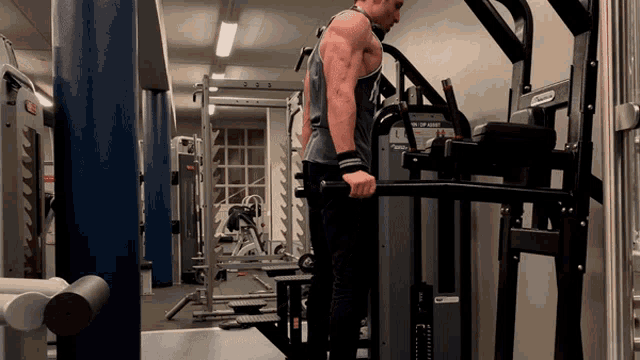
- 3 sets × to failure (8–15 reps)
- Lean forward slightly to target chest more than triceps
- Weighted optional if advanced
effective for building chest muscle, especially the lower part of the chest. While dips also work the triceps and shoulders, leaning forward during the movement shifts the emphasis toward the chest, making it a great finishing move for push day workouts.
Why Are Dips So Effective for Chest?
Dips allow you to lift your own body weight, which means you can increase resistance by adding weights as you progress. They engage multiple muscle groups, promoting overall upper body strength and muscle coordination. When done chest-focused, dips stretch and contract the chest muscles deeply, encouraging muscle growth and definition.
How to Perform Chest-Focused Dips Correctly
- Starting Position: Grab the parallel bars firmly and lift yourself up so your arms are fully extended. Keep your torso leaning slightly forward to emphasize the chest.
- Lowering Phase: Slowly lower your body by bending your elbows and leaning forward more. Go down until your shoulders are just below your elbows.
- Press Up: Push yourself back up by straightening your arms, focusing on squeezing your chest muscles as you rise.
- Repeat: Aim for 3 sets to failure, usually between 8 to 15 reps. If you can easily do more, add weight with a dip belt or weighted vest.
Benefits of Chest-Focused Dips
- Builds lower and outer chest muscles
- Improves upper body strength and muscle coordination
- Uses natural body weight and allows progressive overload
- No equipment needed other than parallel bars
- Great for functional strength and muscle endurance
Optional Finisher:
Push-Ups Burnout Set – 2 sets to failure
- Slow tempo, wide stance, full range of motion.
Tips:
- Warm-Up: Do 5–10 minutes of light cardio and 2 warm-up sets on the bench press.
- Form First: Control the motion, don’t ego-lift.
- Rest Between Sets: Keep rest short (45–60 sec) for hypertrophy, longer (90 sec) for heavy lifts.
Conclusion: Build a Bigger, Stronger, and More Defined Chest
This chest workout is designed to hit every angle of your pectoral muscles — from upper to lower, from compound lifts to isolation exercises. Starting with the Barbell Bench Press, you build raw strength and mass. Then, the Incline Dumbbell Press targets your upper chest for added thickness and shape. The Chest Press Machine ensures controlled pressing power, while Cable Chest Flys and the Pec Deck Machine isolate and sculpt the chest with high tension and great range of motion. Finally, Chest-Focused Dips push your endurance and help define the lower chest.
Together, these six exercises create a complete push-day routine that balances heavy lifting with controlled isolation, allowing you to build size, strength, and definition efficiently. Make sure to focus on proper form, progressive overload, and mind-muscle connection to maximize your results.
Train smart, stay consistent, and your chest will grow stronger and more impressive week after week.


